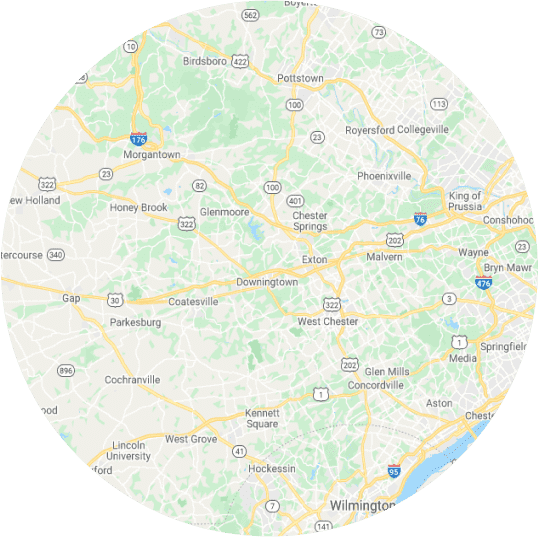Single-Stage vs. Two-Stage vs. Modulating Furnaces: Pros and Cons

Understanding the advantages and disadvantages of each type of furnace before making a purchase is the best way to ensure you’re making the right decision for you and your home. Learn about the differences in comfort, energy usage and longevity between each system.
Last Revised: 3/20/24
Read Time: 9 mins.
From hitting the slopes to taking a trip closer to the equator, tackling winter looks different for everyone. Yet no matter where you’re coming from, after a long, cold day there’s nothing like a warm and cozy home to come back to.
On the coldest winter days, furnaces are the unsung heroes that work endlessly behind the scenes to make this possible.
In the world of home heating, however, not all furnaces are made the same. Single-stage, two-stage, and modulating furnaces are three very different options available to homeowners.
Understanding how the benefits and drawbacks of each type of heating system match up with your own priorities is the only way to make a sound decision for you and your home. At Mattioni, installing new home heating systems is one of our areas of expertise, but we know that not everyone spends as much time thinking about HVAC as we do.
That’s why we’ll be discussing the advantages and disadvantages of all three of these types of heating units. In this article, we’ll look at how single-stage, two-stage and modulating furnaces stack up in the following three areas:
- Comfort Level
- Energy Usage
- System Longevity
But first, let’s explore the technological differences between these three systems.
Design Differences in Single-Stage, Two-Stage, and Modulating Furnaces
Single-stage furnaces have a fixed gas valve, meaning that these systems either run at full capacity or not at all. With no throttling option, they are the simplest of the three types of furnaces.
Two-stage furnaces have an additional gas valve throttle setting at 60% to 70% capacity. This additional setting helps the system in a variety of ways, most of which stem from longer operating times and fewer restarts of the combustion process.
Modulating furnaces take gas valve throttling to new levels as they’re capable of incrementally adjusting the amount of fuel being burned. The heat output of modulating furnaces can drop below 50% capacity, which has numerous benefits that we’ll explore. This type of furnace system has optimal control over temperature output.
Pros and Cons of Single-Stage Furnaces
Pros of Single-Stage Furnaces
Most Affordable Up-Front Cost
Single-stage furnaces come at the lowest installation price out of the three options we’re looking at. They may not have the same level of control as two-stage and modulating furnaces, but you’ll be able to heat your home at the lowest up-front installation cost with single-stage furnaces.
The price of a single-stage furnace is usually around $5,500 with options that can potentially raise the total cost to as high as $7,500.
Require Simpler Cleaning and Maintenance
Single-stage furnaces house fewer moving parts than our other options, so the average maintenance required to keep them up and running is less specialized. This typically results in cheaper repairs down the road.
Though you shouldn’t confuse this with meaning that single-stage furnaces need less maintenance. Every furnace needs to be properly cared for to maintain optimal performance and safety, single-stage systems are just the simplest to repair.
Match Well with Smaller Homes and Apartments
Single-stage furnaces have the shortest run times because they always operate at 100%. In smaller homes, this is enough time for the system to adequately mix its heated air with colder air in the home.
Where these systems may struggle to produce a thoroughly heated larger house, they are an affordable option that’s more than capable of doing so with a smaller home.
Cons of Single-Stage Furnaces
Produce Uneven Heat Throughout Larger Homes
Single-stage furnaces begin to run into problems when they’re tasked with heating larger, multi-story homes. Areas in the home near vents will warm up quickly because the system can only operate at 100% power. This creates gaps in temperature throughout the home as the rest of the house slowly warms up.
When only some corners of the house have reached the set temperature, thermostats connected to this type of furnace may shut off. This means most of the house will never reach the set temperature.
Increased Dehumidification leads to Decreased Comfort
Furnaces also inadvertently dehumidify the air in your home, which isn’t something you want during the winter. And when more British Thermal Units (BTUs) are produced by a furnace, more dehumidification takes place.
Single-stage furnaces only operate at maximum BTU production, causing the most dehumidification which reduces the comfort of conditions in the home.
Low Efficiency, High Fuel Consumption and Costs
Single-stage furnaces only have one fuel intake level, regardless of the amount of heating needed. One common instance where this significantly hurts efficiency is mildly cool days during the Spring and Fall.
For example, if it’s 50° outside you’ll probably want some heating in your home. A single-stage furnace will have no choice but to blast your house with heat, and will then turn off abruptly when it achieves the thermostat temperature very quickly. This is called short cycling, which wastes energy and produces very unevenly heated homes.
As the outside temperature drops, this effect is felt less and less, however single-stage furnaces will most frequently be the least fuel-efficient of our options.
More Wear and Tear Experienced by the Unit
Furnace startup sequences aren’t quite as burdensome to the system as that of air conditioners, but there are a few parts that will wear out quicker on single-stage systems compared to two-stage or modular units.
The ignitor and flame sensor are two components that will likely need to be replaced quicker in single-stage furnaces.
Pros and Cons of Two-Stage Furnaces
Pros of Two-Stage Furnaces
A More Comfortable, Evenly Heated Home
Adding just one more heating stage to a furnace significantly improves the quality of the heat produced for the home.
Two-stage furnaces will run at roughly 65% power once your house is close enough to the thermostat temperature. This slows airflow coming from your vents and increases the length of time before the system kicks off. The result of this is a thoroughly heated house with no warm and cold spots that stays closer to the thermostat temperature.
The lower power mode also mitigates the dehumidification effect of furnaces, which keeps your home more comfortable in the winter.
Higher Efficiency and Lower Fuel Consumption and Bills
There are several different options when it comes to the efficiency ratings of two-stage furnaces. However, the underlying principle of two-stage systems usually makes them more efficient than single-stage furnaces.
When your home’s temperature consistently stays closer to where you want it, your furnace doesn’t have to work to get it back into that range. This means that despite having longer run times than a single-stage system, a two-stage furnace uses less fuel to keep your home at the set temperature.
On days during the Spring and Fall when there’s only a small difference between indoor and outdoor temperatures, a two-stage system will rarely short cycle, which conserves fuel and saves money.
Increased System Health
Because they’re able to avoid short cycling, components in two-stage furnaces like the ignitor and flame sensor experience less stress and last longer. The lower operating speed also puts less stress on the larger parts of the system, like the blower motor and heat exchanger.
Although every furnace should receive a yearly tune-up, two-stage furnaces go through fewer drastic changes in temperature which helps the overall health of the system.
Cons of Two-Stage Furnaces
Higher Upfront Cost
Two-stage furnaces are equipped with a more complex operating system, and therefore come at a higher initial cost. They can cost anywhere from a couple hundred to thousands of dollars more than single-stage units. The exact cost is still dependent upon a few other factors like the size of the home they are being installed in and the exact Annual Fuel Utilization Efficiency (AFUE) rating of the system.
While homeowners can expect to save on fuel costs in the long run with two-stage furnaces, the upfront price of this type of system is more expensive than the simpler single-stage alternative.
Financing options, including 12 months interest free, are available to help reduce this burden. You can find out if you prequalify for a home improvement loan with a simple application that comes at no risk to your credit.
More Specialized Parts Needed for Repairs
The increased complexity of two-stage furnaces also means that the parts needed for repairs can be harder to come by. This means that they may need to be shipped directly from the manufacturer, which increases the wait time and costs before you can use your furnace again.
The team at Mattioni is mindful of this, so we stay stocked with a lot of components needed to repair a two-stage furnace. A smaller service provider, however, may not be able to complete repairs until they receive the OEM parts.
Pros and Cons of Modulating Furnaces
Pros of Modulating Furnaces
Most Consistent Temperature and Comfort
The capability of operating at lower BTU capacities yields several advantages for modulating furnaces.
When this type of furnace operates at a lower BTU output, airflow decreases, leading to more thoroughly mixed air throughout the home. This eliminates all cold and warm spots and keeps the entire home at the same temperature for as long as is needed.
But what about times when you need a stronger influx of heat?
When the gap between the thermostat and actual temperatures is great enough, a modulating furnace will fully open its gas valve and produce as much heat as possible until your home gets warm enough to throttle down.
Once the target temperature has been reached, the system will stay on longer at a lower setting to keep it there. This, in addition to even less inadvertent dehumidification, means modulating furnaces produce the most comfortable home conditions.
Maximum Fuel Efficiency and Savings on Fuel Bills
Modulating furnaces can achieve up to a 98% AFUE rating, which means that for every dollar of fuel spent on heating, you’ll get 98 cents worth of heating. That’s the highest fuel-efficiency score out of our three options.
The elimination of short cycling, significant reduction of startup sequences and the sustained temperatures all add up to less fuel expenditure, and potentially big savings on your fuel bills.
Better Air Quality
A modulating furnace will spend most of its running time on a lower setting. In addition to using less fuel and producing more thorough heating, this also improves the indoor air quality of the home.
When the blower motor runs at a lower speed, the air pressure and airflow decrease which helps your air filter trap more dust and debris. While this is not the primary function of modulating furnaces, it’s a great side effect of being able to run below 50% heating capacity.
Cons of Modulating Furnaces
Highest Upfront Cost
Considering the degree of responsiveness modulating furnaces utilize when heating a home, it doesn’t come as a surprise that they’re the most expense to purchase and install.
Throttling heat output will certainly save homeowners money over the long haul, but the short-term cost of one of these furnaces can reach $13,000. If you’re interested in installing a modulating furnace but are unsure if you can afford to do so, we encourage you to talk to one of our HVAC Professionals about financing options.
Compatibility Concerns
Many modulating furnaces aren’t compatible with older HVAC systems. If you’re looking to upgrade to a modulating furnace, there’s a good chance you’ll have to have more utility modifications done to prepare your home to be integrated with the new system. An in-person consultation is a great way to discover if this applies to your home.
You’ll also need a smart thermostat that is compatible with your new furnace, which is often a forgotten expense when making a furnace decision.
Sophisticated Systems Means Complex Repairs
Even though the advancements that’ve made modulating furnaces possible have been around for years, they’re still much more sophisticated than single-stage and even two-stage systems.
Think about your modulating furnace like a Lamborghini or Ferrari model, whereas your single-stage furnace is a Civic or Camry. The high-end sports car, much like a modulating furnace, is going to need more specialized parts and a more thorough repair.
Even though a modulating system should go longer before running into a problem, like every piece of HVAC equipment, eventually it’ll need a repair. When this time comes, parts are more expensive and you may get stuck with longer wait times if you go with a smaller service provider.
That’s All Great, But Which Furnace Is For Me?
While there are some clear benefits surrounding the comfort and fuel consumption of two-stage and modulating furnaces, this doesn’t mean that they are for everyone. Other factors like your budget and how long you plan to stay in your home are also important to consider.
A good place to start your decision-making process is to identify your priorities when it comes to heating your home. Then, make sure that your new heating system accomplishes what’s most important to you.
Whether it’s creating the most comfortable home during the cold winter months, saving on long-term fuel costs, or staying under your short-term budget, the prime concerns of your situation are unique. If you’ve found a balance between your top priorities, chances are you’ve found the system for you.
Once you have a good idea of which system meets your heating needs, you may still have questions that need to be answered before you make a purchase. The best way to make sure that you’ve found the best heating system for you and your home is by speaking with an HVAC professional.
Scheduling a free, no-risk consultation can help give you peace of mind that you’re making the right home heating decision. Call today at 610-400-8510.





